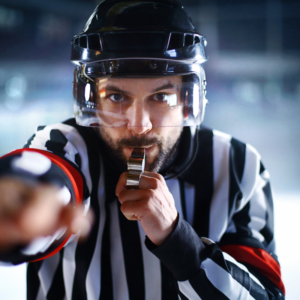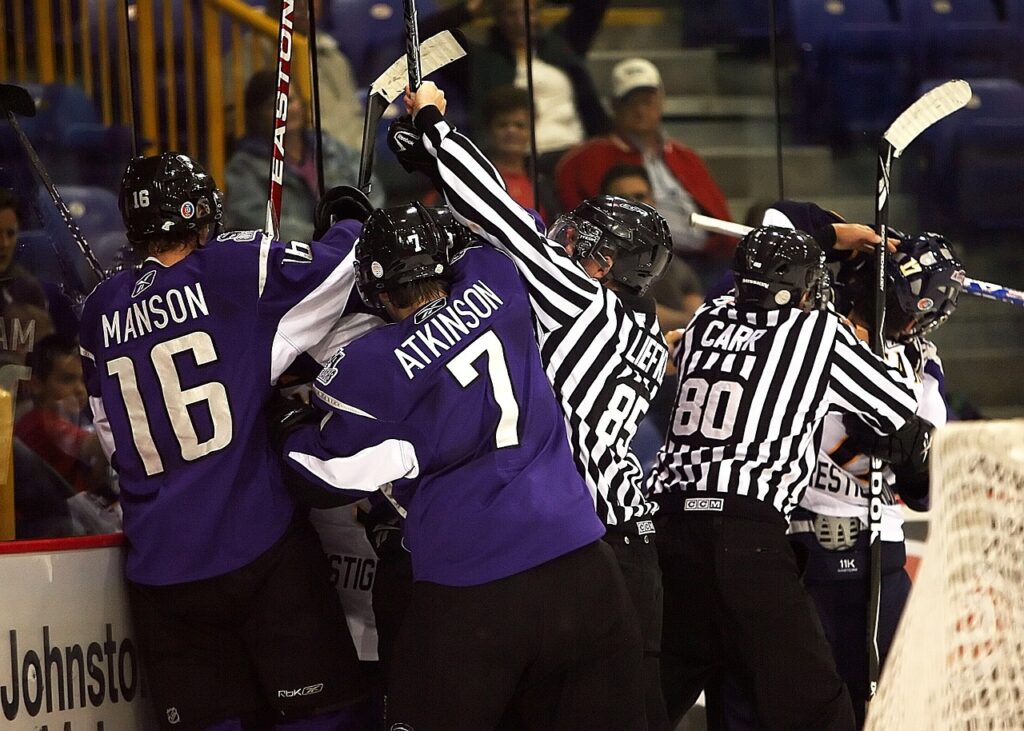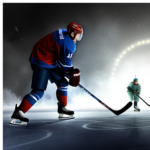In ice hockey the game moves fast, there are lots of rules that need to be followed to keep the game fair and safe. Referees and linesmen are both essential components of the officiating team in the NHL. While they share a common goal of ensuring the game is played fairly and within the rules, they have distinct roles and responsibilities. Here are the differences between referees and linesmen in hockey.

Roles on the Ice:
Referees are the on-ice officials with the highest authority. They have overall control of the game and are responsible for enforcing all the rules and regulations of the NHL. Referees make penalty calls, verify goals, conduct faceoffs after stoppages, and manage the flow of the game. They are distinguishable by their orange arm bands and are positioned throughout the ice to oversee the entire playing surface.
Linesmen, also known as assistant referees, work alongside the referees on the ice. Their primary focus is on specific aspects of the game, such as faceoffs, icing, and offside calls. Linesmen are responsible for conducting faceoffs at the start of play after stoppages, determining if the puck has crossed the icing line or gone out of play, and making offside calls to ensure players enter the offensive zone legally. They are identifiable by their black arm bands and are positioned primarily along the blue lines.
Penalty Calls:
The referees have the ultimate authority to assess penalties for rule infractions committed by players. When they observe an infraction, they raise their arm with a specific gesture to signal the type of penalty. After calling a penalty, they report it to the penalty box, and the player must serve the allotted time in the penalty box.

While linesmen do not have the power to call penalties, they can assist the referees in identifying certain infractions, especially those that may not be immediately visible to the referees. Linesmen can also relay information to the referees during video reviews. Linesmen are also the guys that need to break up any fights. No Thanks!!!
Faceoffs:
Referees are responsible for dropping the puck to start play after each stoppage, including the beginning of each period and following goals.
Linesmen are the primary officials in charge of conducting faceoffs during the game. They ensure that players from both teams are properly positioned and adhere to faceoff rules.
Game Management:
Referees: Game management is primarily the responsibility of the referees. They make decisions that affect the overall flow of the game, such as stopping play for injuries or managing on-ice altercations.
Linesmen: While linesmen assist in game management by helping to break up fights and manage faceoffs, they do not have the same authority as referees to make significant decisions that influence the game’s outcome.
In summary, referees have the highest authority on the ice and are responsible for enforcing all the rules of the game, calling penalties, and verifying goals. Linesmen, on the other hand, focus on specific areas of play, such as conducting faceoffs, making offside and icing calls, and supporting referees in certain situations. Together, referees and linesmen form a cohesive team that ensures fair play and maintains the integrity of the game.
Thanks for your time. Please leave comments and suggestions below.




